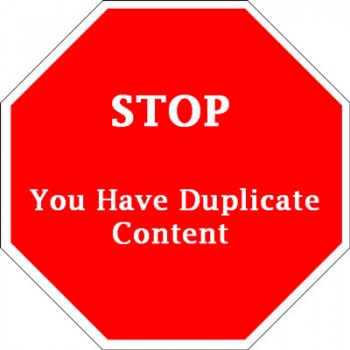Printer friendly pages are a nice, user-friendly addition to your website. If you haven’t taken the proper precautions, Google could be punishing you for duplicate content. This means that your website is publishing more than one version of a webpage and Google doesn’t like that, therefore you will not get the best rankings for your web pages. Luckily, there are many great resources available to help you identify duplicate content issues with your printer friendly pages.
What is considered duplicate content?
Duplicate content is when there are multiple versions of your site floating around on the Internet. There are a number of reasons why a search engine would view a webpage as having duplicate content:
- Spammers that scrap your content from your website and use it on their site
- Comment pagination
- www versus non-www
- URL structure
- Session ID’s
- Printer-friendly pages
How can I identify duplicate content issues?
A great resource to detect if you have any duplicate content issues is to visit your Google Webmaster Tools accounts. This will help you understand and identify any duplicate content issues as well as find information on how to fix them. There are also many articles online that you can do a simple search on to find ways to fix duplicate content problems.
How do I stop my printer-friendly pages from creating duplicate content?
There are two things you need to do to stop your printer-friendly pages from creating duplicate content. The first thing is to add the “no-index meta tag.” Secondly, you can add the “canonical tag” to your webpages. Implementing each of these will help the search engines to understand what each page on your website is all about and will encourage the search engines to index only the web-friendly version of your website pages.
1.) Noindex meta tag – The noindex meta tag is implemented in the <head> of your page and will can tell Google not to index your printer-friendly page versions.
The noindex tag looks like this:
<meta name=”robots” content=”noindex”>
2.) Canonical tag – The canonical tag tells Google which is the “authoritative” or “canonical” page that should be indexed. In this case, it would be the web-friendly page that is the canonical page, not the printer-friendly page.
The canonical tag looks like this:
<link rel=”canonical” href=”http://example.com/page” />
When each of these tags are implemented, you have told the search engines to only index the web-friendly pages and to ignore the printer-friendly pages. This will prevent most duplicate content issues.
The hardest part will most likely be to explain these types of duplicate content issues to your web developer. Web developers tend to think a little differently than an SEO professional. In order to start fixing your duplicate content, simply explain these issues to your developer and follow up with them so you know that you are avoiding any duplicate content issues.


Wouldn’t a better approach for printer-friendly pages be to use a print-optimized stylesheet? Then, when you have content changes, you don’t have to edit in two places. You have one piece of content, hosted on one URL, but the browser is smart enough to load the right style sheet based on the media setting.
Mr. Rellart… One version instead of two is definitely preferred from a manageability perspective. Sometimes certain website content management software doesn’t properly handle printer-friendly content correctly, so I think this post is dealing specifically with that issue. I agree that using a stylesheet to strip out the navigation, sidebar, footer and header when someone is printing the page is the best way to offer printer-friendly content, but it all depends on if you are working with an existing website that’s already set up or building a new website from scratch with completely modern code. Scott